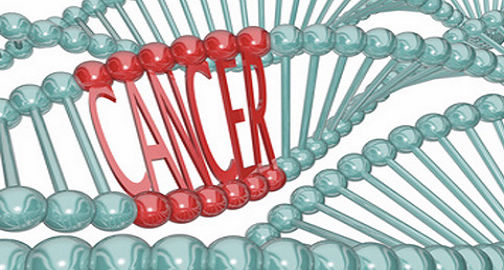
2016年7月31日讯 /生物谷BIOON/ –来自新加坡癌症科学研究所的研究人员发现了促进急性早幼粒白血病(APL)发生的新基因变异。APL是急性髓系白血病的一个亚型,在该病的发病过程中会出现早幼粒细胞的异常积累。这项研究共包含了大约220个病人样本,其中既包括新诊断病例又包括复发病例。这些样本来自新加坡,德国,印度,美国和台湾等国家和地区。相关研究结果发表在国际学术期刊Leukemia上,该研究将为进一步提高APL的诊断和治疗效果铺平道路。
新发病例和复发病例中的突变
文章作者表示:"病人通常对全反式维甲酸(ATRA)和三氧化二砷(ATO)这两种治疗方法应答较好,这两种方法也是治疗APL的优选模式。但是仍然存在一些病人不能对标准疗法产生应答,或者会在治疗后出现复发。众所周知在APL疾病中染色体变异会导致PML与RARA基因发生融合,这是该病的一个重要基因事件,但许多研究也证明其他基因异常与PML-RARA癌基因一起共同促进了APL的发展。因此揭示该疾病全部的分子图谱是一项非常有价值的工作。"
研究人员首先在新发APL病例中发现了一些居于次要地位的基因变异,其中包括许多在APL中新发现的突变。其中在ARID1A和ARID1B这两个同家族基因上发现的致病突变尚属首次,有研究表明这两个基因的产物参与形成染色质重塑复合体。这些突变的发生表明在APL中存在表观遗传机制的失调,同时还帮助研究人员找到了一些之前从未发现参与白血病发生的基因。
而在复发病例中,研究人员发现了一些在新诊断病例中没有观察到的基因改变,大多数发生在RARA和PML基因上的重要突变只存在于复发病例。该研究还表明这些突变主要存在于诊断后分别接受ATRA治疗和ATO治疗的两个不同病人群体。
研究人员表示:"我们对新发病例和复发病例的突变图谱研究帮助我们建立了APL的分子地图,这与其他AML亚型是不同的。我们将会进行进一步研究揭示这些新突变的作用,从而不断加深对该疾病的了解,最终开发出更好地诊断和靶向治疗方法。"(基因宝jiyinbao.com)
Comprehensive mutational analysis of primary and relapse acute promyelocytic leukemia
V Madan1, P Shyamsunder1,23, L Han1,2,23, A Mayakonda1,23, Y Nagata3, J Sundaresan1, D Kanojia1, K Yoshida3, S Ganesan4, N Hattori1, N Fulton5, K-T Tan1, T Alpermann6, M-C Kuo7, S Rostami8, J Matthews9, M Sanada3, L-Z Liu1, Y Shiraishi10, S Miyano10, E Chendamarai4, H-A Hou11, G Malnassy5, T Ma12, M Garg1, L-W Ding1, Q-Y Sun1, W Chien1, T Ikezoe13, M Lill14, A Biondi15, R A Larson16, B L Powell17, M Lübbert12, W J Chng1,2,18, H-F Tien11, M Heuser19, A Ganser19, M Koren-Michowitz20,21, S M Kornblau9, H M Kantarjian9, D Nowak22, W-K Hofmann22, H Yang1, W Stock5, A Ghavamzadeh8, K Alimoghaddam8, T Haferlach6, S Ogawa3, L-Y Shih7, V Mathews4,24 and H P Koeffler
Acute promyelocytic leukemia (APL) is a subtype of myeloid leukemia characterized by differentiation block at the promyelocyte stage. Besides the presence of chromosomal rearrangement t(15;17), leading to the formation of PML-RARA (promyelocytic leukemia-retinoic acid receptor alpha) fusion, other genetic alterations have also been implicated in APL. Here, we performed comprehensive mutational analysis of primary and relapse APL to identify somatic alterations, which cooperate with PML-RARA in the pathogenesis of APL. We explored the mutational landscape using whole-exome (n=12) and subsequent targeted sequencing of 398 genes in 153 primary and 69 relapse APL. Both primary and relapse APL harbored an average of eight non-silent somatic mutations per exome. We observed recurrent alterations of FLT3, WT1, NRAS and KRAS in the newly diagnosed APL, whereas mutations in other genes commonly mutated in myeloid leukemia were rarely detected. The molecular signature of APL relapse was characterized by emergence of frequent mutations in PML and RARA genes. Our sequencing data also demonstrates incidence of loss-of-function mutations in previously unidentified genes, ARID1B and ARID1A, both of which encode for key components of the SWI/SNF complex. We show that knockdown of ARID1B in APL cell line, NB4, results in large-scale activation of gene expression and reduced in vitro differentiation potential.
 基因君官网
基因君官网